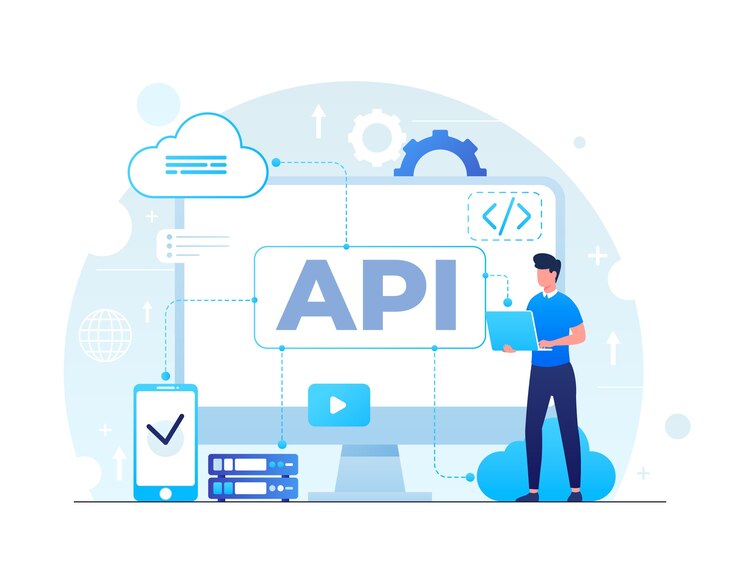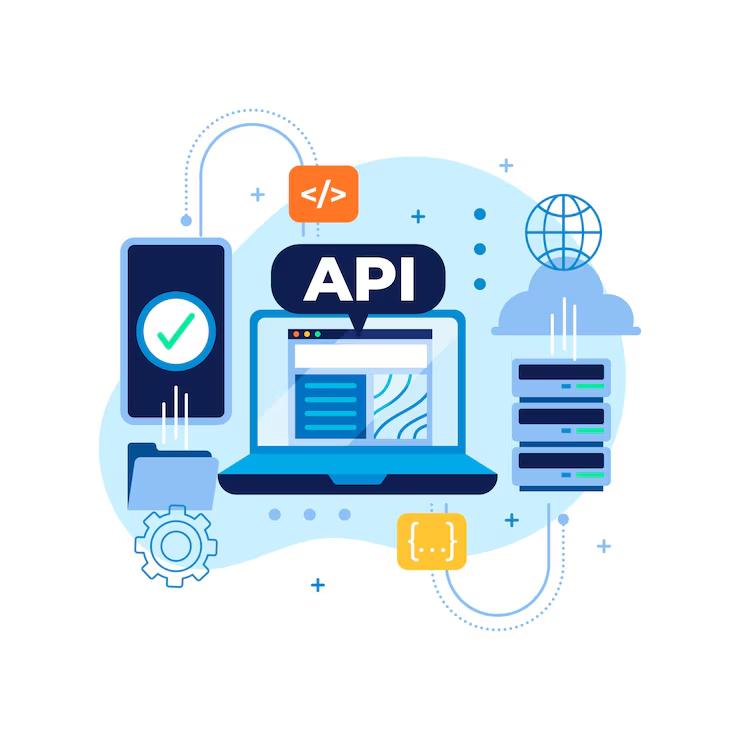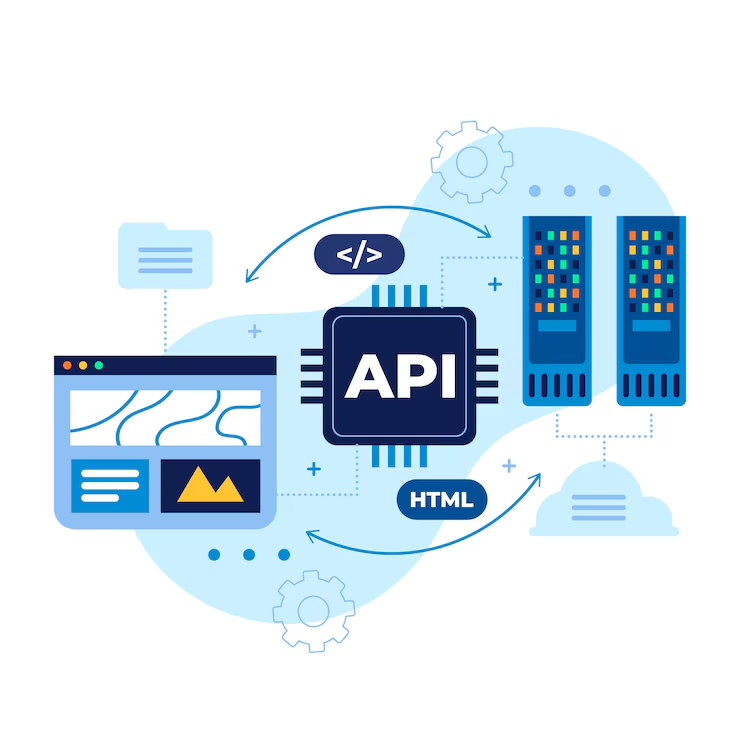Understanding GST API Access
- 14 Aug 24
- 14 mins

Understanding GST API Access
Key Takeaways
- GST APIs streamline and automate crucial GST compliance processes, significantly reducing manual effort and improving accuracy.
- Real-time data exchange facilitated by GST APIs allows businesses to maintain up-to-date records, enhancing decision-making and financial planning.
- APIs are essential for integrating various GST functions such as e-invoicing and return filing directly into business ERP systems.
- Implementing GST APIs requires understanding API documentation, developing robust integrations, and conducting thorough testing in a controlled environment.
- By adopting GST APIs, businesses not only ensure compliance but also drive technological adoption, making operations more efficient and adaptable to new regulations.
Introduction to API Technology
Application Programming Interfaces (APIs) are essential components of modern software development, acting as intermediaries that allow different software programs to communicate and interact seamlessly. At their core, APIs define the methods and data formats that programs can use to communicate with each other, serving as a set of rules and protocols for building and integrating application software.
APIs are ubiquitous in today's digital ecosystem, enabling diverse software systems to connect and share functions and data in a controlled environment. They are used to enhance functionalities within applications, allowing developers to implement features without having to code from scratch. For instance, APIs can enable a web application to display data from a database, interact with the operating system, or integrate with external services like social media platforms, payment gateways, or data analytics tools.
The importance of APIs extends beyond just facilitating functionalities within software applications. They are pivotal in enabling the digital transformation strategies of many businesses by supporting new services and making existing systems more responsive and adaptable to new business opportunities. APIs allow for flexibility in development and design, fostering innovation by providing a standard way to access platform-specific features without tying the development to one particular technology or vendor.
Understanding of APIs: Definition and Users
An Application Programming Interface (API) can be broadly defined as a set of commands, functions, protocols, and objects that programmers can use to create software or interact with an external system. It provides developers with standard commands for performing common operations so they do not have to write the code from scratch.

APIs are not just tools for developers; they are also pivotal in business strategy. They enable companies to open up access to their digital assets, data, and functionalities to external third-party developers, business partners, and internal departments within the company. This openness can lead to the creation of new systems or linkages between existing ones, improving efficiency, innovation, and the user experience across various digital platforms.
The users of APIs are diverse, ranging from software developers who use APIs to enhance their applications with complex functionality to non-technical business strategists who leverage API-powered analytics for decision-making insights. In the tech industry, APIs are used to enable integration and functionality that is crucial for building complex systems and applications that need to interact with other applications. For example, developers use APIs provided by a platform like Twitter to embed social media content directly into a website or use Google Maps APIs to add mapping and location capabilities to their apps.
In summary, APIs are fundamental to modern software development and business operations. They not only support the technical underpinnings of applications but also empower businesses to leverage external capabilities, enhance customer experience, and drive innovation. By standardizing how interactions occur between different software products and services, APIs simplify development, foster business collaborations, and pave the way for future technological advancements.
Objectives of Utilizing APIs in the GST Framework
The integration of Application Programming Interfaces (APIs) into the Goods and Services Tax (GST) framework in India serves multiple strategic objectives aimed at enhancing the efficiency, reliability, and transparency of tax administration. Here are the primary goals:
- Automation of Compliance Processes: APIs automate many aspects of GST compliance, such as the filing of returns, payment of taxes, and reconciliation of invoices. This automation reduces the manual effort required from businesses, minimizing errors and increasing the accuracy of submissions.
Real-time Data Exchange: APIs facilitate real-time data exchange between business accounting systems and the GST Network (GSTN). This capability ensures that data, such as tax liabilities and input credit availabilities, are updated instantaneously, helping businesses stay current with their tax positions.

- Enhanced Transparency and Control: By allowing seamless access to data and real-time operations, APIs provide businesses and tax authorities with greater visibility into transactions. This transparency helps in better monitoring and auditing of tax filings and payments.
- Ease of Doing Business: APIs simplify the process of integrating with the GSTN, making it easier for businesses, especially small and medium enterprises, to comply with GST regulations without needing specialized IT resources.
- Encouragement of Technological Adoption: The use of APIs promotes the adoption of advanced technologies in the financial and accounting sectors, pushing businesses towards digital transformation and modernization of their operational processes.
Different Categories of GST APIs
GST APIs are categorized based on the functionalities they offer to cater to the diverse needs of the stakeholders involved in the GST ecosystem. Here are some of the main types of GST APIs available:
| Type of GST API | Description |
|---|---|
| Authentication API | Used to authenticate the identity of users accessing the GST system, ensuring that only authorized users can perform operations. |
| Return Filing API | Enables businesses to automate the filing of various GST returns directly from their ERP systems, simplifying the process and ensuring timely and accurate data submission. |
| Payment API | Facilitates the automation of tax payment processes, allowing businesses to make direct tax payments through their accounting or business management software without manual intervention on the GST portal. |
| Ledger Management API | Provides functionalities to view and manage various ledgers such as cash ledger, liability ledger, and credit ledger available on the GST portal, helping businesses keep track of their tax liabilities and credits in real-time. |
| E-way Bill API | Allows for the generation, update, and cancellation of e-way bills through integrated software solutions, crucial for businesses involved in the movement of goods to manage compliance related to logistics and supply chain operations. |
| GSTR-1 API | Enables the upload of invoice data for outward supplies, assisting in the monthly or quarterly preparation of GSTR-1 returns without manual data entry. |
By implementing these various types of APIs, the GST system in India not only streamlines the process of tax compliance but also leverages technology to enhance the operational efficiencies of businesses across the country.
Detailed Steps to Implement GST APIs
Implementing GST APIs requires careful planning and execution to ensure seamless integration and compliance with the GST framework. Here are the typical steps involved in implementing GST APIs:
- Obtain API Access: The first step is to obtain access to the GST APIs from the GST Network (GSTN). This often involves registering on the GSTN portal and obtaining credentials such as API keys that will allow secure interaction with GST services.
- Understand API Documentation: Thoroughly review the documentation provided by GSTN, which includes details about API endpoints, data formats, and protocols. Understanding the documentation is crucial for proper integration.

- Develop Integration: Using the API documentation, develop the integration between your business's software systems (like ERP or accounting software) and the GST APIs. This may involve writing custom code or configuring middleware that can translate between your systems and the GSTN.
- Testing: Before going live, thoroughly test the API integration in a controlled environment to ensure it works as expected. This should include testing for data accuracy, security, and error handling. GSTN often provides a sandbox environment for this purpose.
- Deployment: Once testing is complete and the integration is stable, deploy the solution to your production environment. This step should be planned carefully to avoid any disruptions in business operations.
- Ongoing Monitoring and Maintenance: After deployment, continuously monitor the integration for any issues. Keep the system updated according to any changes in the GST API specifications or business requirements.
- Compliance and Reporting: Regularly use the integrated system to comply with GST requirements, including filing returns and making payments as needed. Ensure that the data shared via APIs remains accurate and secure at all times.
💡If you want to pay your GST with Credit Card, then download Pice Business Payment App. Pice is the one stop app for all paying all your business expenses.
How GST APIs Function
GST APIs provide a programmable interface to the GST Network, facilitating automated data transmission between taxpayers’ systems and the GST system. Here's a detailed explanation of how they typically function:
The operation of GST APIs is based on a request-response model, where the client system sends a specific request to the GST server via the API. In response, the server returns data or a confirmation depending on the nature of the request. Such requests can vary widely, including tasks like uploading invoice data, filing returns, or fetching information about tax liabilities. To ensure the data is consistently structured and parsed, the APIs accept and return data in standardized formats, typically JSON or XML.
Security is a crucial aspect of the operation of GST APIs. Each API request must be authenticated using tokens or API keys, which ensures that only authorized users can access the services. Moreover, the security of data transmission between the taxpayer’s system and the GST server is enhanced by the use of HTTPS, which encrypts the data to prevent interception.
Error handling is another important feature; the APIs are designed to provide error messages and codes if a request fails due to issues like invalid data or server errors. This mechanism is vital for diagnosing problems and taking corrective actions promptly. Additionally, GST APIs may implement rate limiting to prevent abuse and ensure fair usage among all users, which involves limiting the number of API calls a single user can make within a certain period.
Finally, many GST API operations require real-time data processing, such as generating e-way bills or filing returns, to ensure timely compliance with tax regulations. By understanding and effectively utilizing these functionalities, businesses can automate and streamline their GST compliance processes, significantly reducing manual effort and increasing both accuracy and efficiency.
Advantages of Using GST APIs
Using GST APIs offers several significant advantages for businesses, particularly in terms of improving the efficiency, accuracy, and reliability of their GST compliance processes. Here are some of the key benefits:
- Streamlined Operations: GST APIs automate and streamline various aspects of the GST compliance process, such as filing returns, uploading invoices, and managing tax payments. This reduces the administrative burden and frees up resources that can be better utilized elsewhere in the business.
- Enhanced Accuracy: Automation minimizes human intervention in data entry and calculations, significantly reducing the likelihood of errors. This accuracy is crucial in compliance contexts where errors can lead to penalties, disputes, or audits.
- Real-Time Data Synchronization: GST APIs facilitate real-time data exchange between a business’s internal systems and the GST portal. This ensures that businesses always have access to the most current financial information, which is essential for making informed decisions and maintaining compliance.
- Improved Compliance: With APIs, businesses can ensure their systems are always updated with the latest GST rules and regulations. This dynamic compliance helps avoid potential legal issues and simplifies the process of adapting to changes in the tax environment.
- Cost Efficiency: Automating GST processes through APIs can lead to significant cost savings over time. By reducing the need for manual labor and minimizing errors, businesses can lower their operational costs and reduce the risk of costly compliance mistakes.
- Scalability: GST APIs are designed to handle transactions at scale, making them ideal for businesses experiencing growth. They can manage increasing volumes of transactions without a corresponding increase in compliance and administrative costs.
- Accessibility and Integration: GST APIs can be integrated with various business applications and systems, enhancing the accessibility of GST-related functions across the organization. This integration supports a more holistic approach to business management and tax compliance.
- Security and Reliability: When implemented correctly, GST APIs provide secure and reliable connections to the GST portal, ensuring that sensitive financial data is transmitted safely. This security is vital for maintaining trust and integrity in business operations.
Overall, the advantages of using GST APIs are transformative for businesses, enabling more efficient, accurate, and reliable GST compliance processes. This not only helps in maintaining good standing with tax authorities but also supports strategic business operations.
Requirements for Implementing GST API for E-Invoicing
Implementing GST API for e-invoicing involves several key requirements that businesses must meet to ensure a smooth setup and operation. These requirements are designed to maintain data integrity, security, and compliance with the GST framework. Here’s what businesses need to consider:
- GST Registration: The foremost requirement is that the business must be registered under the GST regime. Only registered businesses can access and utilize the GST API for e-invoicing.
- API Access and Configuration: Businesses must apply for API access through the GST portal, where they will receive the necessary API keys or access tokens. These credentials are essential for authenticating and securing communication between the business's systems and the GST network.
Robust IT Infrastructure: A stable and secure IT infrastructure is crucial to support the e-invoicing process. This includes having reliable internet connectivity, secure servers, and adequate data protection measures to handle and store sensitive financial information securely.

- Integration with Business Software: The GST API needs to be integrated with the business’s existing accounting or ERP (Enterprise Resource Planning) software. This integration allows for the seamless generation, storage, and transmission of invoice data directly through the software, minimizing manual intervention.
- Compliance with GSTN Specifications: The implementation must adhere to the technical standards and specifications set by the GST Network (GSTN). This includes formats for data submission, encryption standards, and other technical requirements that ensure compatibility and secure data exchange.
- Testing and Validation: Before going live, it is imperative to thoroughly test the GST API integration in a sandbox environment provided by the GSTN. This testing phase helps identify and rectify any issues in data transmission, receipt handling, or API communication.
- Training and User Support: Staff who will operate the e-invoicing system should receive adequate training on its functionality, troubleshooting, and best practices. Additionally, setting up a support framework to address any operational issues promptly is crucial for maintaining uninterrupted service.
- Regular Updates and Maintenance: As GST regulations and software requirements can evolve, ongoing maintenance and updates to the API integration are necessary. This ensures that the e-invoicing system remains compliant with new requirements and continues to operate efficiently.
By fulfilling these requirements, businesses can successfully implement the GST API for e-invoicing, leading to improved compliance, better data management, and enhanced operational efficiencies. This not only streamlines the invoicing process but also supports broader financial and tax management strategies within the organization.
 By
By 















